Wired doorbells: types and selection rules
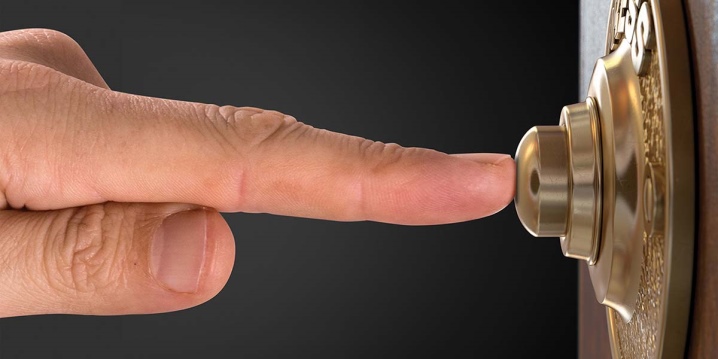
Until a few decades ago, there was no significant choice of doorbells. Nowadays, when buying this, at first glance, an ordinary device, it is very easy to get confused in the abundance of sold modifications. We will try to determine which samples of door bells are on sale and which device is preferable to purchase for use in various conditions.
Peculiarities
The market for electric wire calls is represented by a colossal variety of modifications. There are devices here that operate on a 220 V AC mains, from batteries with a wire button and designs with a hybrid power supply, sparkless calls. They can be equipped with a switch and volume control, which makes it possible to listen and set the required sound volume.
Wired samples, like wireless samples, allow you to listen to an abundance of pre-set musical themes and customize the signal to your liking.
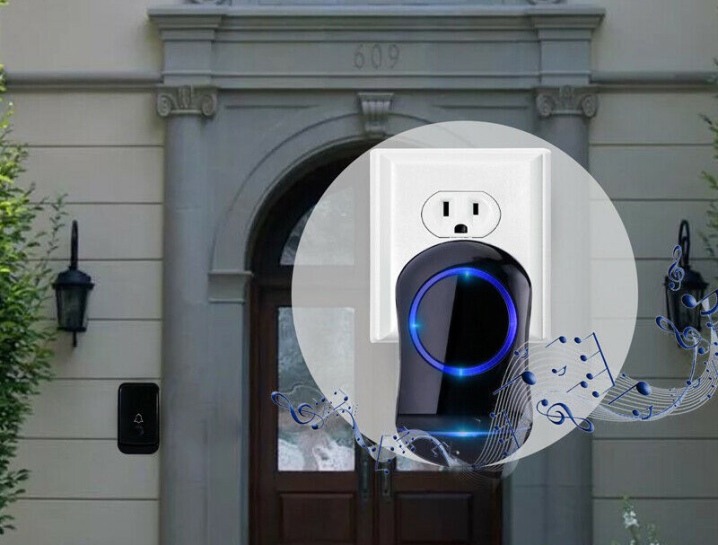
Another feature of wired doorbells is that it is preferable to install them before finishing work or before installing the front door; in case of a different development of events, it will be necessary to restore the damaged walls.
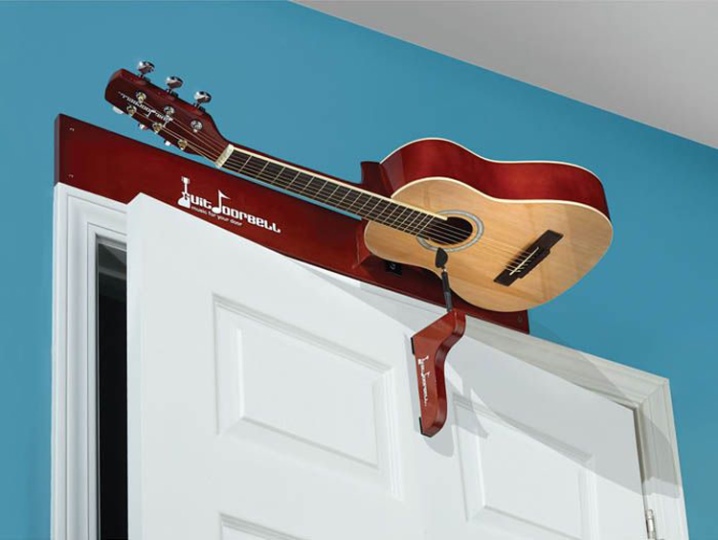
Principle of operation
The operating concept of this device is as simple as possible.
A wired electric doorbell is a device that emits an audible signal when power is applied.
For to close the power supply circuit, you need to press the button... In order to implement a similar pattern in work, a phenomenal and at the same time ingenious solution was used, the connection diagram was taken from the connection diagram of a conventional switch.
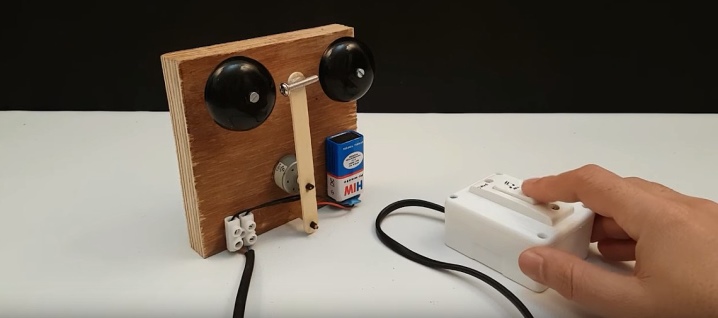
It is important that these devices have the ability to separate the components into different zones. The bell button is located outside, on the front door, and the device itself resides in the apartment itself. Closing and disconnection of the electrical circuit is accomplished due to the presence of an electromagnet. This is how this design works.
As you can see, the key differences are that a button is used instead of a switch, and an electric bell took the place of a lighting fixture. You should not have any complications during the wiring process for the doorbell.
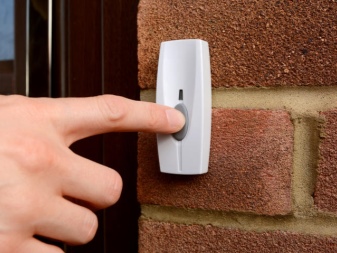
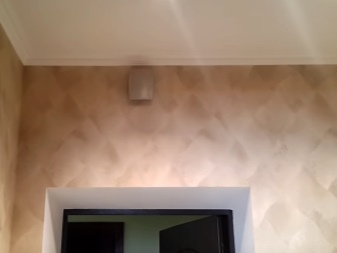
Species overview
At the moment, there are various modifications of doorbells.
Electromechanical
The function of the electromechanical front door bell is as follows. When an electric current is supplied, a repetitive vibration of the percussion device occurs, provided by an electromagnet, which acts on a steel plate, which acts as a sound resonator. As a result, a sound is heard, the power of which remains depending on the size of the plate.
Advantages:
- long service life;
- easy installation;
- simplest structure.
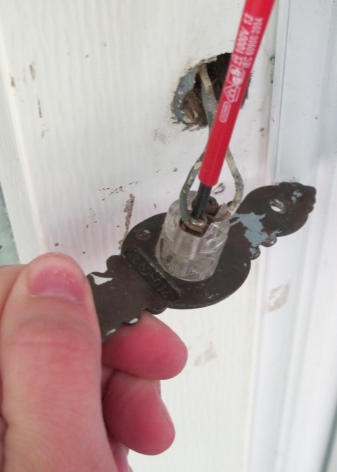
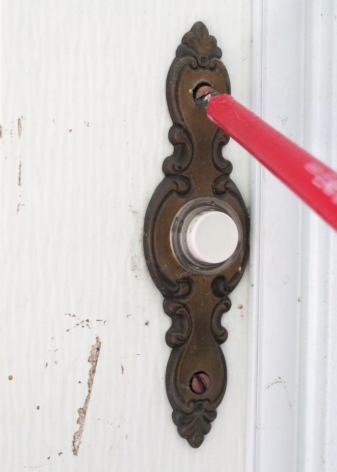
Negative traits:
- the device will not function without the presence of current in the mains;
- there is no setting of various melodies and sounds;
- monotone signal.
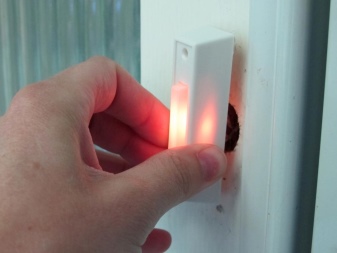
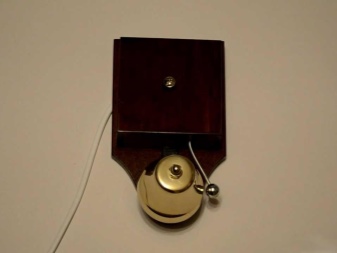
Electronic
The connection of electronic devices, in essence, does not differ from the connection of electromechanical bells, only their internal structure is characterized by the presence of an electronic component. The sound does not propagate from impacts against the sound resonator, but from the speaker. These bells are equipped with volume controls and an option to select melodies.
Electronic calls are classified into two types.
Wired
These are simple devices that function by pressing a button that closes an electrical circuit. Such electric bells were installed during the Soviet era on the doors of all apartments without exception. Currently, wire calls have a modified design. They integrate a variety of melodies or sounds from famous movies.
These bell modifications are more reliable and can be used for most entrance doors.
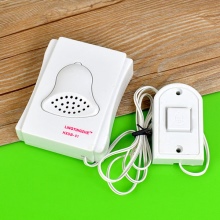
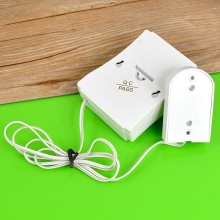
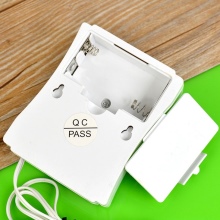
Advantages:
- solid and simple construction;
- the wired structure makes it possible for the warning device to function stably in those places where the button is isolated from the speaker by an excessive number of iron and concrete obstacles;
- a mechanical button installed outdoors is much more weather-resistant than an electronic one.

Disadvantages:
- impossibility of functioning if there is no electrical energy;
- breakdown due to the fault of low-quality parts;
- the complexity of the installation (the need to pull wires, drill holes in the wall);
- considerable danger of devices operating from the mains.
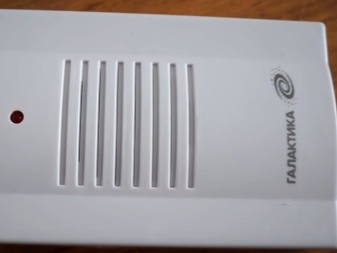
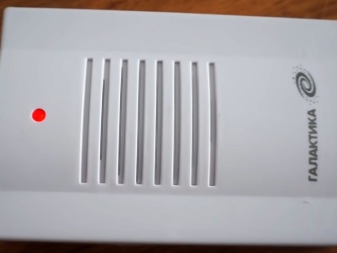
Wireless
These devices are practical for mounting in detached houses. Visitors who come are not near the front door of the house, but near the courtyard gate, which is at some distance from the house. There is no need to run electrical wiring from the gate to the house to mount wireless bells. When the button is pressed, the signal is delivered by means of electromagnetic waves to the module inside the room. Various modifications can function at different distances between the button and the main module, but no more than one hundred meters. Wireless devices are available in two versions: battery-powered or rechargeable. They do not require a 220 volt household power supply, as a result of which they are placed where there is no electricity, for example, in a huntsman's house or a forest hut.
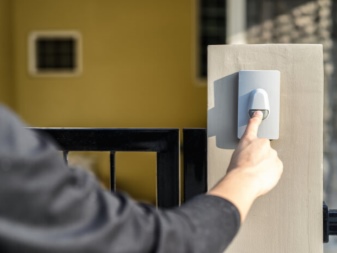
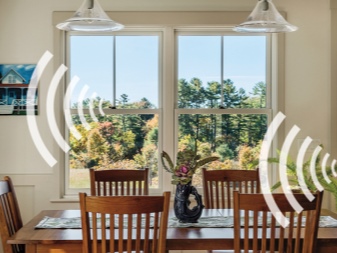
Advantages:
- they can function in the absence of a power supply, they have a waterproof case without any wiring, which resists the penetration of moisture;
- Installation of wireless devices is straightforward and does not require any wiring.
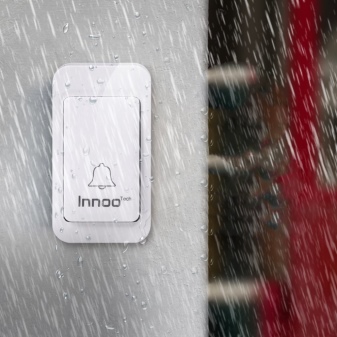

Minuses:
- with an impressive distance and the presence of iron or concrete obstacles between the button and the signal module, its functionality decreases;
- frosty weather can cause failure of the wireless electric call
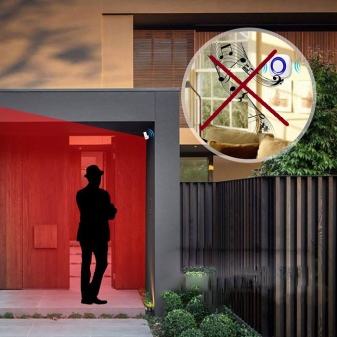

Design
The modern electric doorbell fits perfectly into any design.
The white plastic case is a traditional look that is increasingly ignored by manufacturers today. Since most potential buyers tend to buy such a device that will look stylish, creative, highlight this or that composition in interior design.
The body itself, buttons, and other additional components can be different in configuration and color.
In addition, the materials for decoration can be very different. All sorts of stylizations are in particular demand: stone, suede, natural leather, wood texture.
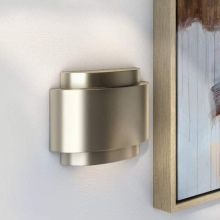
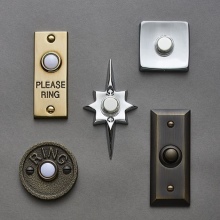

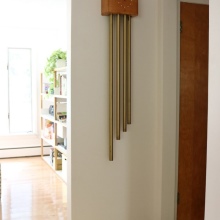


How to choose
Before purchasing an electric doorbell, the first step is to decide on the choice of the installation site. If it will be mounted inside the apartment, then you don't have to worry too much, since any modification will do. For an individual home, it is advisable to buy a wireless product. It will make it possible not to stretch the wire from the gate.
On the street, the external button will be constantly exposed to all kinds of external influences. A fundamental condition for such a call will be the presence of a specialized spraying that protects against water ingress. Equally, this device must be able to withstand temperature fluctuations perfectly.
In addition, a visor is also required. It will serve as additional protection from the sun's rays, snow, rain and dust. Most importantly, the safety components do not obstruct the sound signal in any way. When purchasing a street modification, it is necessary to take into account the fact that the device can be stolen. Specialized modifications are produced with a metal anti-vandal casing.

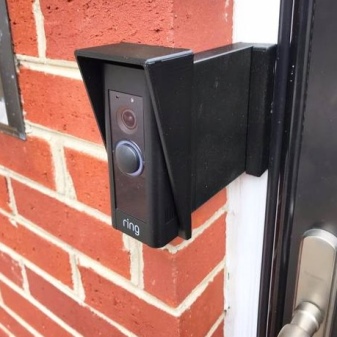
In order for the door wired electric doorbell to work for a long time, when purchasing it, you need to follow a few ingenuous tips. Such devices should be purchased at special outlets. A qualified sales consultant will help you navigate the parameters of a particular model and find a suitable option.
When purchasing a device, you must listen to it. The ringing sound can be typical or in the form of a melody.
The volume of the device intended for installation in front of the entrance door to a larger room should be such that it can be heard from any nook of the dwelling.
The design approach and appearance also matter. The electric doorbell fulfills not only its key task, but is also an integral part of the interior, therefore, it should be selected in accordance with the interior design of the room.
At the moment the doorbell is a rather complex device, which, in addition to informing the owners about the arrival of visitors, has a lot of other effective options, in this regard, its purchase must be approached thoroughly and with all responsibility.

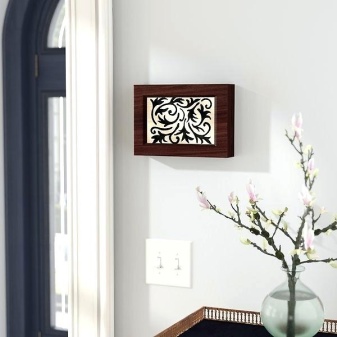
Connection diagram
For self-fulfillment installation of a wired electric bell you will need:
- electric drill or hammer drill;
- indicator screwdriver;
- pliers;
- screwdrivers with a thin sting;
- nippers.
In addition to the above, you should have:
- the electric call itself;
- a button to turn it on;
- a pair of two-wire wires.

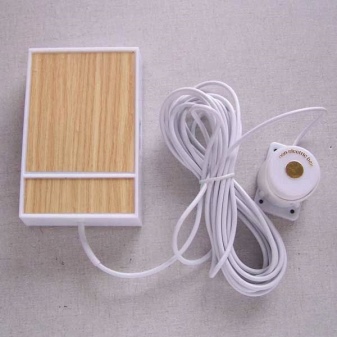
This is what a brief instruction on how to connect a call looks like.
To make the installation, prepare an electrical wire that includes two cores with a cross section of 0.5 to 0.7 sq. mm. Since the electric call has a low power, the use of wiring with a large cross-section will be irrational.
Besides, take into account that the material from which the strands are made can be copper or aluminum... Choose a wire that contains the same cores as all apartment wiring.
All wiring that goes into the junction box above the front door must be disconnected from the electricity supply.
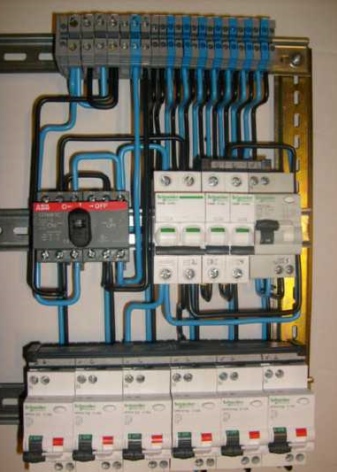

Wire routing:
- one is pulled from the box to the electric bell, the other is also from the box, only to the button, the far ends of each wire are connected to the button and the bell;
- wires are tied in the box, according to the diagram.
As you can see, the circuit exactly reproduces the typical circuit for connecting the switch. Specifically, "0" is connected to the bell, and the phase wire goes to the button, which is similarly coupled to the doorbell. In other words, in the button, the phase is broken, at the same time, by pressing the button, you close the electrical circuit, and the bell makes a sound... If this wired electric call is connected to a simple 220 V socket, it will ring until the electricity comes in.
Sometimes, in a purchased device, the consumer discovers not two, but four terminals. Most do not understand exactly how to connect the wires. The manufacturer, on the other hand, made the decision that it would be easier this way (in reality, the exact opposite). In this situation, refer to the connection diagram.
Here the bell itself is designated as a junction box... It is connected to wires from the button and two cores, powered by a voltage of 220 V.


Another scheme is practiced - when the bell is fed through a transformer. As a rule, a similar method occurs when the button is made of metal.For the sake of electrical safety, it is powered with low voltage - 8 V, 12 V or 24 V. In order to implement this scheme, a call with a low voltage control is required (it is better to ask the seller about this in advance).
A transformer for an electric call is placed in the electrical panel, the dimensions of which are similar to a circuit breaker. A low-voltage wire is pulled from it to the junction box, after which it is connected to the wiring of the button and bell.

A video overview of wired doorbells is presented below.













The comment was sent successfully.